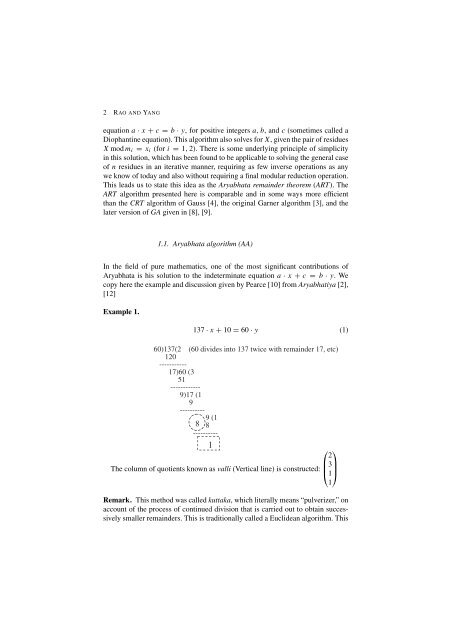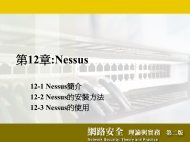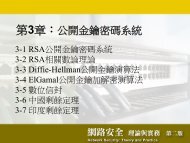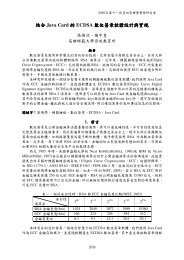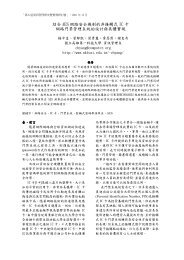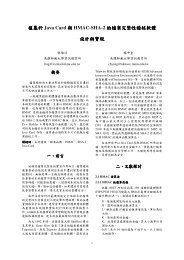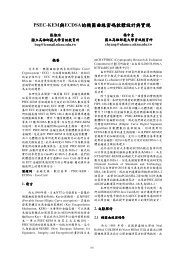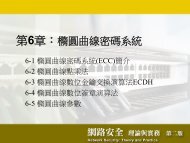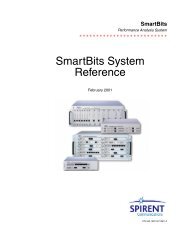aryabhata remainder theorem: relevance to public-key crypto ...
aryabhata remainder theorem: relevance to public-key crypto ...
aryabhata remainder theorem: relevance to public-key crypto ...
You also want an ePaper? Increase the reach of your titles
YUMPU automatically turns print PDFs into web optimized ePapers that Google loves.
2 RAO AND YANG<br />
equation a · x + c = b · y, for positive integers a, b, and c (sometimes called a<br />
Diophantine equation). This algorithm also solves for X, given the pair of residues<br />
X mod mi = xi (for i = 1, 2). There is some underlying principle of simplicity<br />
in this solution, which has been found <strong>to</strong> be applicable <strong>to</strong> solving the general case<br />
of n residues in an iterative manner, requiring as few inverse operations as any<br />
we know of <strong>to</strong>day and also without requiring a final modular reduction operation.<br />
This leads us <strong>to</strong> state this idea as the Aryabhata <strong>remainder</strong> <strong>theorem</strong> (ART). The<br />
ART algorithm presented here is comparable and in some ways more efficient<br />
than the CRT algorithm of Gauss [4], the original Garner algorithm [3], and the<br />
later version of GA given in [8], [9].<br />
1.1. Aryabhata algorithm (AA)<br />
In the field of pure mathematics, one of the most significant contributions of<br />
Aryabhata is his solution <strong>to</strong> the indeterminate equation a · x + c = b · y. We<br />
copy here the example and discussion given by Pearce [10] from Aryabhatiya [2],<br />
[12]<br />
Example 1.<br />
137 · x + 10 = 60 · y (1)<br />
60)137(2 (60 divides in<strong>to</strong> 137 twice with <strong>remainder</strong> 17, etc)<br />
120<br />
-----------<br />
17)60 (3<br />
51<br />
------------<br />
9)17 (1<br />
9<br />
----------<br />
8<br />
9 (1<br />
8<br />
----------<br />
1<br />
⎛ ⎞<br />
2<br />
⎜<br />
The column of quotients known as valli (Vertical line) is constructed: ⎜3<br />
⎟<br />
⎝1⎠<br />
1<br />
Remark. This method was called kuttaka, which literally means “pulverizer,” on<br />
account of the process of continued division that is carried out <strong>to</strong> obtain successively<br />
smaller <strong>remainder</strong>s. This is traditionally called a Euclidean algorithm. This


